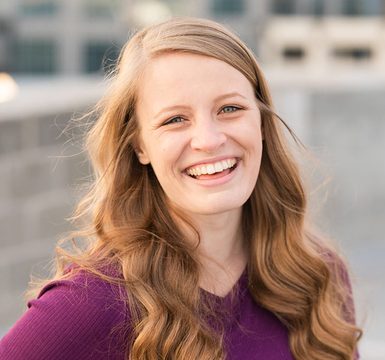Over the past six years, Qualtrics has gone from a handful of RFP writers supporting a few dozen sales reps to a full team of proposal managers that support more than 1,000 sales professionals worldwide.
“We used to store our proposal content and RFPs in a shared drive, which was almost impossible for sales reps to use to put together a response on their own,” says Trevor Evans, Qualtrics’ global proposals leader.
Today, they handle hundreds of RFPs per year, influencing millions in annual revenue. They do it with help from an RFP response software, which stores their best content in a searchable library and automatically suggests answers based on past RFPs. This helps reps create a quality first draft faster, and streamlines the review process for the proposal team.
But even with these tools and processes in place, triaging urgent proposals with a few days notice was still a big challenge. Under pressure, sales professionals used to handle last-minute RFPs on their own (some of which could be hundreds of questions long).
“We had to think of a better process, and that’s where we came up with the RFP clinic,” says Trevor.
Here’s how Qualtrics’ global proposal team created a stellar system for tackling RFP requests with short turnaround times.
A New Way to Meet Tight RFP Deadlines: The RFP Help Clinic
In 2019, the RFP clinic was originally created to support proposals with short turnaround times. Since then, it’s also expanded to include bids that are less likely to win, as well as those with smaller dollar amounts.
“Ultimately, with the RFP clinic we’re able to assist with more proposals than ever before,” explains Madeline George, the manager of Qualtrics’ RFP clinic.
“It allows us to respond to RFPs that we otherwise would have turned down because of a short deadline, poor relationship, or lack of available proposal managers.”

Here’s how it works: Reps working on bids assigned to the RFP clinic can video call between 2 p.m. to 3 p.m. daily to ask questions of the proposal team and get support for their urgent requests. The proposal team helps by reviewing the opportunity, submitting legal tickets, answering questions, and assisting with security questionnaires. (All within that short 1-hour timeframe.)
The best part? The trigger for emergency support is easily accessed by the sales reps. All they need to do is find the opportunity in Salesforce and click a button to request ‘RFP help’. Then, they answer a few questions about the request and an email is sent for the proposal team to triage. A team lead then assigns it to someone directly or sends it to the RFP clinic for immediate attention.

On average, the proposal team spends 2-3 hours on RFP clinic support for each emergency proposal. They import the project directly into their RFP automation software and discuss the ideal response strategy with the rep on the call.
“Because of the way the RFP clinic is structured, we still maintain high-quality responses by providing strategy, insight, and support for sales reps throughout the whole journey,” says Madeline.
The sales rep answers the majority of the RFP questions, but they’re not on their own. They use Loopio’s project management features to assign the more challenging (or technical) ones to the RFP clinic’s team—which clinic members sprint to answer during their daily one-hour time frame.
This efficient system revives opportunities by providing reps with the support they need, especially for last-minute deals as the proposal team still provides quality control through strategy, legal review, importing, exporting, and formatting of the final document.
“We get a lot of positive feedback on the RFP Clinic from sales reps and other departments,” says Madeline. “I think they’re grateful that we don’t leave them on their own for last-minute deals and that it’s a system that’s not only extremely helpful and easy to learn, but also highly effective.”
3 Ways to Implement an Urgent RFP Process
Here are Trevor and Madeline’s top three tips to get buy-in for a fast-tracked proposal process (like this one) for bids with tight deadlines:
Work With Your Global Leadership Team
If you want people to try something new, you need to get buy-in from the top-down. Ask leaders in different regions to champion your RFP process and educate sales reps on the benefits of using them. You need to explain why it will benefit them. (For example: spend less time hunting through Google-drive for the correct answers, get more end-to-end assistance on a larger number of RFPs.)
Use a System That Aligns With Your Team’s Current Processes
Proposal managers, if you try to insert an RFP software that doesn’t align with how people work now, you’ll get a lot of resistance and not much adoption.
“People need to see that the best use of their time is through the tool and not looking for workarounds or ways to do things the old way,” Trevor explains. “That’s why your processes must reflect how your groups work on a day-to-day basis.”
Choose a Tool That Doesn’t Require Tons of Training
Sales reps may only respond to a few RFPs each year. You don’t want to train them on an RFP software that’s hard to use—and worry that they’ll forget everything by the time they actually use it. Choose an RFP automation tool that’s intuitive and doesn’t require much hand-holding.
How to Measure Success of an RFP Help Clinic
Since the Qualtrics proposal team is a sales support function, they naturally keep a close eye on revenue metrics to gauge their success. Trevor does track their RFP win rate, but he doesn’t think it’s the most important metric.
“One metric that we’re doubling down on is our advancement rate. Our sales cycles are long, and it can take months after submitting the RFP before the customer makes a decision. But we can find out pretty quickly if we advance to the next round.”

“When we don’t advance to the next round, we need to learn why and identify ways to improve,” Trevor continues.
The proposal team consistently seeks feedback from customers to gain insights that will help them improve their results.
After a deal is marked as “won” or “lost,” Salesforce automatically triggers a Qualtrics workflow to request feedback from contacts involved in the decision. For larger deals, the Salesforce trigger sends an alert to the sales leadership team to reach out personally and arrange a win-loss interview.
If you want to build a feedback process, Trevor recommends keeping your requests short. “The longer you make it, the fewer people that will participate. Short surveys get higher response rates. An RFP response is just one of many ways clients determine which vendor to go with.”
The proposal team asks the following questions when soliciting feedback:
1. “Did our RFP response influence your likelihood to choose Qualtrics?” (Using the point system below.)
- We were much less likely to choose Qualtrics
- Somewhat less likely to choose Qualtrics
- Neither more nor less likely to choose Qualtrics
- Somewhat more likely to choose Qualtrics
- Much more likely to choose Qualtrics as a result of your RFP response.
2. “What strengths/weaknesses of our RFP response most influenced your likelihood to choose Qualtrics?”
In addition to prospects, Qualtrics’ proposals team has received lots of positive feedback from their sales team as well. They love the RFP clinic because it consistently helps them respond to RFPs faster, accelerate deals, and ultimately, earn the chance to win more business.
“The RFP clinic has been really successful,” says Trevor. “I think it’s one of the best things that we do.”
Want to hear more RFP best practices? Read Qualtrics full success story.
